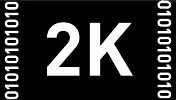

Danish provocateur Lars von Trier (Breaking the Waves, Dancer in the Dark, Melancholia) returns with his latest piece of cinematic nihilism, the sadistic-comedy The House That Jack Built. Matt Dillon stars as Jack, a soulless serial killer with obsessive-compulsive disorder who views his murders as works of art. For two and a half hours, we watch Jack engage in brutal acts of violence—mostly towards “stupid” women—and get away with taking greater and greater risks, easily evading inept police. Between five randomly chosen “incidents,” as he refers to them, we hear Jack explain how each went down to the poet Virgil (Bruno Ganz) who seems to be acting as a kind of twisted Clarence the Angel, guiding him to the depths of hell. We also hear Jack’s musings on art, genius, and how the worst despots of history were perhaps the Glenn Goulds and William Blakes of their medium.
The film is far too self-aware and self-satisfied (masturbatory would be an apt descriptor) to realize most of its lofty pretensions. Dillon commands the screen, but Jack is too empty a vessel to engage with for such a long film with no other characters, apart from his victims and Virgil. And while designed to shock and disturb, the incidents depicted are too detached to get under our skin in any meaningful way (though engendering a “ho-hum” reaction in many viewers may be the point). As with most of von Trier’s work, we’re meant to experience the hopelessness and despair of the director’s über-pessimistic worldview and central critique that we live in a vapid, disinterested culture where unspeakable atrocities go unnoticed every day. But in this case we mostly just think he’s a twisted little fuck who needs to get over himself
Still, The House That Jack Built is not a worthless viewing experience. If given a choice between watching it on a loop for twenty-four hours straight or having to sit through twenty minutes of this year’s first big blockbuster Ready Player One again, I’m settling in with von Trier and Dillon for the day. It may fail far more than it succeeds, but the picture does occasionally force us to confront the darkest aspects of society in meaningful ways. The scene that may be the most upsetting to audiences, an act of meaningless brutality visited on an defenseless animal, delivers more insight into the mind of a serial killer than any of Jack’s didactic voice-over. And the movie’s epilogue—which shifts from von Trier’s usual random-shakey-cam shooting style (less deliberately jarring here than in his DOGMA95 films) to the painterly, beautifully composed, slow-motion aesthetic of sequences like the prologue of his most exquisite picture Melancholia (2011)—is surprisingly captivating.
In the final assessment, however, this is a case of a film that’s more about its author than its subject. Yes, the two blur in some intriguing ways, but this picture is far more a “statement” than a work of art.
NOTE: I saw the unrated “director’s cut” which was given a one-night-only American release in major cities. The “R” rated version (which I haven’t seen) will be released in December.
Twitter Capsule:



